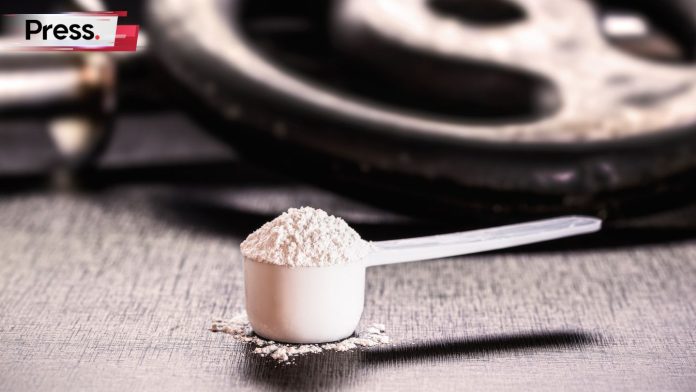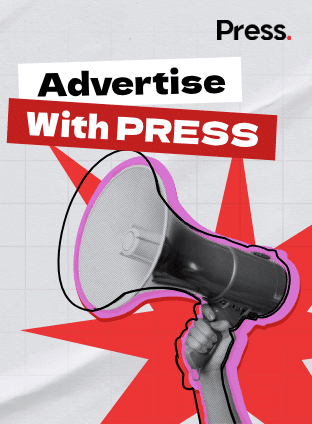Key Takeaway
- Daily consistency beats timing: build muscle creatine saturation first.
- Post-workout may have a slight edge, particularly when paired with carbs/protein.
- Pair with carbs or protein to support creatine retention.
- Hydration matters, but creatine itself isn’t shown to cause dehydration or cramps in healthy people.
- Loading is optional: 3–5 g/day reaches the same saturation over time.
Table of Contents
ToggleTake creatine every day. If a routine helps, take it after training with carbs or protein for a small possible edge, but consistency and total daily intake matter far more than exact timing.
Why Creatine Works (and why timing is secondary)
The energy system is supercharged
- ATP–PCr system (first 10 seconds): During sprints or heavy sets, ATP is burned fast. Phosphocreatine (PCr) donates a phosphate to regenerate ATP, keeping power output high for a little longer.
- Supplementation = a bigger PCr “battery”: Muscles can store only so much PCr. Daily creatine raises this ceiling, so you can maintain intensity longer, accumulate more quality reps, and drive better training adaptations over time.
The uptake pathway (what helps absorption)
- Transporter: Creatine uses the SLC6A8 transporter on muscle cells. It’s sodium- and chloride-dependent, so uptake is tied to cell gradients and blood flow.
- Insulin & co-ingestion: Protein and carbs don’t “activate” creatine like a switch, but they can nudge retention upward by increasing insulin and blood flow after training.
- Post-exercise muscle: After hard work, the muscle is more “receptive” to nutrients (glycogen, amino acids). That’s why post-workout with carbs/protein can have a small advantage in retention. Still, the main thing is taking it daily so your stores stay topped up.
Saturation and why “every day” wins
- Muscles fill up over 1–3 weeks without loading (faster if you load).
- Once saturated, time of day is a rounding error. Missing days lowers the reservoir; hitting your dose keeps it high.
Read More: Whey Protein Malaysia: How to Choose to Maximise Results
Before vs After: What the Evidence Really Suggests
Before workout
- Pros: Easy to pair with a pre-gym routine. If you already prep a pre-workout drink, adding creatine boosts adherence.
- Cons: Creatine doesn’t “kick in” acutely, so performance that day isn’t from timing, it’s from prior saturation.
- Caffeine note: Research on creatine + caffeine is mixed. If your stomach is sensitive, separate them for comfort. Otherwise, don’t overthink it.
After workout
- Pros: Convenient to mix with a post-workout protein shake or a carb-containing snack/meal. This combo supports creatine retention and lines up with recovery habits.
- Cons: None unique. Gains still depend on total training volume over weeks, not whether you drank it at 5:30 or 6:00 PM.
Anytime daily (the adherence king)
- If you train early, take it with breakfast. If you train late, take it post or with dinner. The best time is the time you’ll never forget.
Loading vs No Loading (and who benefits most)
Two proven approaches
- No loading (simple & effective):
- Dose: 3–5 g/day
- Timeline: Full saturation in about 2–3 weeks
- Best for: Everyone who values simplicity and GI comfort
- Loading (faster saturation):
- Dose: 0.3 g/kg/day split into 4–5 doses (20 g/day for many adults) for 5–7 days, then 3–5 g/day
- Best for: Athletes peaking soon, or those wanting quicker saturation (e.g., short mesocycles)
Responders vs non-responders
- Biggest responders: Those with lower baseline muscle creatine (e.g., many vegetarians/vegans), larger fast-twitch fiber area, and higher training volume.
- “Non-responders”: Often already near saturation from diet or genetics. They still might benefit, just less dramatically.
How Much to Take (by goal, body size, and training)
Goal / Profile | Daily Dose | Notes |
General strength & fitness | 3 g | Minimalist, effective |
Hypertrophy / most lifters | 5 g | Easy “one-scoop” habit |
Large or very high-volume athletes | 5–10 g split | Consider 0.1 g/kg as a simple rule |
Older adults (with resistance training) | 3–5 g | Can amplify strength and lean mass gains |
Vegetarian/Vegan | 5 g | Baseline levels may be lower → often better response |
Dietary creatine: Typical omnivorous diets provide roughly 0.5–1+ g/day, varying by meat/fish intake and cooking losses. Supplements make intake consistent and trackable.
Mixers, Stability, and GI Comfort
What to mix it with
- Water, milk, or a shake (whey + banana is a classic).
- Juice is fine if you drink it after mixing.
Stability & solubility truths
- Creatine gradually converts to creatinine in liquid over time, faster with heat and very low pH.
- Practical rule: Mix it, drink it, and you’re fine. You don’t need warm water; micronized monohydrate dissolves well with a quick stir or shaker.
GI tips
- Split doses (e.g., 2–3 g AM, 2–3 g PM) if you get bloating.
- Take with food if your stomach is sensitive.
- Avoid letting creatine sit in a hot car (Malaysian heat can be brutal, same advice you’d give for protein powder).
Hydration, Heat, and Cramp Concerns (especially in Malaysia)
- Creatine doesn’t dehydrate you. The water it draws is inside muscle cells (where you want it), not away from your whole-body hydration.
- In hot, humid environments (KL evenings, Penang mid-day runs, futsal in Subang), you’ll sweat more. That increases your fluid and electrolyte needs, independent of creatine.
- Practical target: Start your day hydrated, sip during training, and aim for pale-yellow urine. Add electrolytes if your sessions exceed 60–90 minutes or you’re drenched.
Safety, Lab Tests, and Who Should Ask a Doctor First
- Healthy adults: Long-term use at recommended doses is considered safe.
- Serum creatinine note: Creatine can raise serum creatinine slightly (a breakdown product), which may look like reduced kidney function on paper. For healthy people, this usually isn’t actual kidney damage, just a lab quirk.
- Talk to a clinician if: You have kidney disease, uncontrolled hypertension, are on nephroactive meds, are pregnant/breastfeeding, or you’re managing complex health conditions.
- Anti-doping: Creatine is legal in sport.
- Quality: Choose reputable brands; look for third-party testing for purity and heavy metals.
Popular Discussions About Creatine
Hair loss & DHT
- One small study in male athletes found higher DHT after creatine, which sparked “hair loss” headlines. A causal link to hair loss hasn’t been established. If you’re genetically predisposed and concerned, monitor, talk with a clinician, and weigh the modest performance benefit.
Women
- Creatine benefits women similarly to men for strength and lean mass, with no unique safety flags at standard doses. It can also help maintain training quality during calorie deficits.
Older lifters & rehab
- Creatine plus progressive resistance training can aid sarcopenia prevention, power, and function. Timing is again secondary to daily adherence and training quality.
Team sports & repeated sprints
- Expect improvements in repeated high-intensity efforts (e.g., futsal, rugby, hockey) more than single, marathon-length outputs. Pairing with proper carb availability matters here.
Does Timing Really Change Results?
- Magnitude: Any timing advantage is small relative to the benefits of being saturated and training hard.
- Mechanism: Post-workout wins slightly in some studies because it naturally aligns creatine with carbs/protein and higher blood flow, not because the clock strikes a magic minute.
- Actionable: Choose the time you can repeat daily. If that’s post-workout with a shake, great. If it’s breakfast, also great.
Rest Days, Fasting, and Ramadan
- Rest days: Keep your daily dose to maintain saturation. Take it with a meal (breakfast or lunch).
- Fasting/Ramadan: Dose at sahur or iftar. Focus on total fluids and electrolytes across the non-fasting window. If GI sensitivity is an issue at iftar, push creatine to later in the evening with a snack.
What Type of Creatine Should You Take?
Type | What it is | Pros | Cons | Verdict |
Monohydrate | The gold standard | Most research, affordable, effective | Slight graininess if not micronized | Best choice |
Micronized Monohydrate | Finer monohydrate | Mixes easier, gentler on stomach | Slightly pricier than plain mono | Great if you want easy mixing |
Creatine HCl | Different salt form | Dissolves very easily, smaller doses | More expensive, no clear outcome edge | Preference, not necessity |
Buffered/others | Altered pH or blends | Marketing claims of less bloat | No consistent superiority | Stick to mono |
How to Take Creatine (Step-by-Step)
Option A: No-load plan (simple)
- Take 5 g creatine monohydrate once daily.
- Mix in water or your shake; drink after mixing.
- Pair with carbs/protein when convenient (e.g., post-workout).
- Don’t miss days, set a phone reminder.
Option B: Fast-track loading plan
- For 5–7 days, take 20 g/day split into 4–5 doses (e.g., 5 g with each meal/snack).
- Then 5 g/day thereafter.
- If your stomach protests, split doses or cut loading short, you’ll still get there.
Hydration guide (Malaysia)
- Aim for 2.5–3+ L/day, more in hot outdoor sessions.
- Add a pinch of salt and some fruit or a zero-sugar electrolyte if you’re a heavy sweater.
Real-World Malaysian Routines
Morning lifter (6:30 AM)
- Train → shower → breakfast: oats + milk + whey + 5 g creatine.
- Lunch and dinner as usual; keep fluids up in humid weather.
Midday lifter (1:00 PM)
- Train → post-shake: whey + banana + 5 g creatine → rice + chicken an hour later.
Evening lifter (7:00 PM)
- Train → post-workout: whey + 5 g creatine → dinner (rice + veg + protein).
- If using a caffeine pre-workout, take creatine after to minimize GI overlap.
Weekend outdoors (Bukit Kiara hikes, futsal in Subang)
- Pre-hydrate, pack water/electrolytes. Take creatine with a meal later the same day.
Troubleshooting Guide
“I feel bloated.”
- Try 3 g/day for 2 weeks, then 5 g. Use micronized powder. Take with food. Split doses.
“No difference after a week.”
- You’re still saturating. Give it 2–4 weeks, ensure protein intake and progressive overload in training.
“Stomach upset.”
- Smaller, split doses; mix thoroughly; take with meals.
“I keep forgetting.”
- Anchor it to a daily habit: post-workout shake, breakfast, or bedtime. Use a reminder.
“Weight jumped 1–2 kg!”
- That’s mostly intramuscular water and glycogen, often beneficial for performance and fullness.
Summary
Take 3–5 g of creatine monohydrate every day. If it fits your routine, take it after training with carbs or protein for a small potential edge, yet the real gains come from staying saturated, training hard, sleeping well, and eating enough protein and calories. In Malaysia’s heat, prioritize fluids and electrolytes. Keep it simple, keep it daily, and let the steady bump in reps, recovery, and muscle fullness compound into long-term progress. For more information, be sure to follow PR agency Malaysia.
Disclaimer: All of the content was thoroughly fact-checked and verified by our editorial team to ensure accuracy, clarity, and reliability.
FAQs About When to Take Creatine
Creatine before or after workout?
Either works; post-workout has a small edge in some studies, especially with carbs/protein. Consistency matters most.
Can I take creatine with coffee?
Yes. Evidence on interactions is mixed; separate only if caffeine upsets your stomach.
Do I need a loading phase?
Optional. Loading saturates faster; 3–5 g/day reaches the same destination over time.
Can I mix creatine with my protein shake?
Absolutely, and it can support retention post-workout. Drink after mixing.


